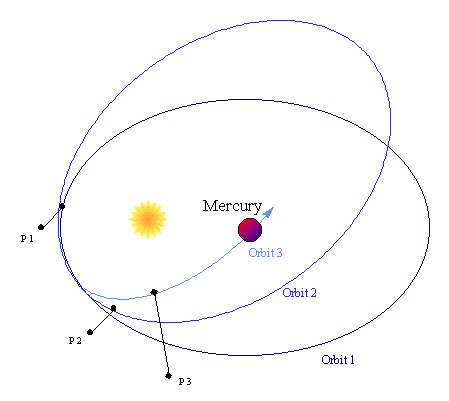
Agave: Dionysus' Ill-fated Aunt
Merely being related to a god won't necessarily protect one from the god's wrath. In fact, deities tend to punish relations more severely than others for their transgressions. Case in point: the Theban woman Agave,. sister of Semele, the mortal mother of Dionysus. Semele and Zeus fell in love and conceived Dionysus. Hera, Zeus' wife, grew to hate Semele and, while disguised as a old woman, persuaded Semele, who was seven months' pregnant, to ask Zeus to reveal himself in his natural form. Zeus, who had sworn by the River Styx to comply with any of Semele's requests, sadly transformed into a thunder cloud. The resultant lightning discharge immediately struck and incinerated Semele. Just before Semele's incineration, Zeus reached into her body and removed the infant, which he placed in his thigh until the gestation was complete. The child was therefore named "Dionysus," meaning :"twice-born."
Semele's sisters Agave, Autonoe and Ino widely disseminated the story that their dead sister had never been Zeus's consort. Instead, her lover was a mere mortal and she falsely claimed that Zeus fathered her child. They then said that her immolation was condign punishment for her blasphemous claim. When Dionysus attained godhead, he vowed to avenge his mother's memory on her siblings. He traveled to Thebes where his mother's sisters still lived. Agave's son, Pentheus, had become king of Thebes. Dionysus cast an insanity spell on the Theban women, all of whom fled to the wilderness surrounding Thebes. Once outside the city, all the women began dancing and wailing in a bacchanal frenzy. Dionysus when disguised himself as an old beggar and informed King Pentheus that the city's women had become engaged in wild sexual exploits in the surrounding countryside. King Pentheus left Thebes at once to investigate, although it is not known if he intended to punish the women for their lascivious behavior or if he had hoped to join them. On first seeing Pentheus, Agave and the other women believed him to have been a lion and promptly attacked him. In this mad mindset, Agave dismembered her own son with savage abandon. She then stuck his head on a pole and marched back to Thebes while triumphantly holding it aloft. Only when she encountered her father Cadmus, Thebes' founder, was her sanity restored and she realized to her horror what she had done.
THE SOUTHWORTH PLANETARIUM
207-780-4249 www.usm.maine.edu/planet
70 Falmouth Street Portland, Maine 04103
43.6667° N 70.2667° W
Altitude: 10 feet below sea level
Founded January 1970
Julian Date: 2459250.18
2020-2021: LXXXIII
THE DAILY ASTRONOMER
Thursday, February 4, 2021
Thursday, February 4, 2021
Exploratorium XVI: Mercury's Perihelion Shift
Location
Mercury's orbit
Mercury's orbit
Time
Any given perihelion
Today, we visit Mercury, or, at least Mercury's orbit. Our aim is to understand why a minute shift in the planet's perihelion position provided verification for Albert Einstein's General Theory of Relativity.
Well, doesn't this one look like that Christmas present consisting of 1,435 irreplaceable components and emblazoned with the divorce-precipitating phrase "some assembly required." However, if we approach this question slowly and methodically, Alexander, we might be able to extract the threads from this Gordian knot. Admittedly, this question does contain many moving parts, which, to mix metaphors, we'll take in turn.

The above image shows a two complete Mercurian orbits and one partial orbit. The perihelion point on each is designated by P. The perihelion positions shift after each orbit due largely to he gravitational influence of the other planets and, to a lesser extent, the Sun's influence. General Relativistic effects account for a small part of the shift, amounting to about 43 arc-seconds.
Mercury describes an elliptical orbit around the Sun, as do all the planets. We can think of an elliptical orbit as being similar to an "oval." Each ellipse contains two focus points, one of which the Sun occupies. During each orbit, Mercury attains its least distance from the Sun, a point called "perihelion." The orbital position at which Mercury reaches perihelion doesn't remain static. It shifts along its orbit by 574" per Julian century.** Most of this shift (531.6") is attributable to the gravitational tugs of other planets.
We ascribe a meager fraction (0.0254") to the Sun's oblateness. Oblateness measures the ratio between a spherical body's equatorial diameter (through the middle) and the polar diameter (the line connecting opposite poles.) The equatorial and polar diameters are equal in perfectly spherical body, but in an oblate spheroid the equatorial diameter is greater. The body has a "bulge." The Sun's oblateness is minuscule: about nine millionths, meaning that its equatorial diameter is about 10 kilometers greater than its polar diameter: a trifle, considering its equatorial radius is 696, 350 kilometers.*** Though the Sun is nearly a perfect sphere, that slight bulge is sufficient to induce a 0.0254" shift in Mercury's perihelion value.
The planetary and solar factors in the shift of Mercury's perihelion position have been well known since the 19th century, when the Sun's mass and actual distances between the Sun and planets were determined. However, as early as 1859, Urbain Le Verrier**** noted that the observed precession of Mercury's perihelion was greater than it should have been. He and other astronomers based these predictions on Newtonian principles. The anomalous rate of precession, as it is called, amounted to nearly 43", far too large to be within an allowable margin of error.
Many theories attempted to account for this discrepancy. One of the principal theories involved the Sun's oblateness, which some assumed to be far greater than the currently accepted value, which is far too small to be responsible for this anomalous rate of precession. (A term that sounds so deliciously sophisticated that we just had to mention it again.) As it turns out, Einstein's General Theory of Relativity explained the discrepancy. General Relativity describes gravity as being caused by massive objects distorting their local space-time geometry. Newton's description says nothing of the sort and presumes that space is static and unaffected by any object's motion within it. General Relativity essentially says that the Sun is bending space-time enough to account for this extra precession. To adopt an analogy that will likely imperil my hopes of becoming the next Nobel Laureate, think of the Sun as 'dragging' space time enough to cause some 'crumpling' around Mercury: enough to push its perihelion point ahead more than it would were space-time undistorted.
Mercury describes an elliptical orbit around the Sun, as do all the planets. We can think of an elliptical orbit as being similar to an "oval." Each ellipse contains two focus points, one of which the Sun occupies. During each orbit, Mercury attains its least distance from the Sun, a point called "perihelion." The orbital position at which Mercury reaches perihelion doesn't remain static. It shifts along its orbit by 574" per Julian century.** Most of this shift (531.6") is attributable to the gravitational tugs of other planets.
We ascribe a meager fraction (0.0254") to the Sun's oblateness. Oblateness measures the ratio between a spherical body's equatorial diameter (through the middle) and the polar diameter (the line connecting opposite poles.) The equatorial and polar diameters are equal in perfectly spherical body, but in an oblate spheroid the equatorial diameter is greater. The body has a "bulge." The Sun's oblateness is minuscule: about nine millionths, meaning that its equatorial diameter is about 10 kilometers greater than its polar diameter: a trifle, considering its equatorial radius is 696, 350 kilometers.*** Though the Sun is nearly a perfect sphere, that slight bulge is sufficient to induce a 0.0254" shift in Mercury's perihelion value.
The planetary and solar factors in the shift of Mercury's perihelion position have been well known since the 19th century, when the Sun's mass and actual distances between the Sun and planets were determined. However, as early as 1859, Urbain Le Verrier**** noted that the observed precession of Mercury's perihelion was greater than it should have been. He and other astronomers based these predictions on Newtonian principles. The anomalous rate of precession, as it is called, amounted to nearly 43", far too large to be within an allowable margin of error.
Many theories attempted to account for this discrepancy. One of the principal theories involved the Sun's oblateness, which some assumed to be far greater than the currently accepted value, which is far too small to be responsible for this anomalous rate of precession. (A term that sounds so deliciously sophisticated that we just had to mention it again.) As it turns out, Einstein's General Theory of Relativity explained the discrepancy. General Relativity describes gravity as being caused by massive objects distorting their local space-time geometry. Newton's description says nothing of the sort and presumes that space is static and unaffected by any object's motion within it. General Relativity essentially says that the Sun is bending space-time enough to account for this extra precession. To adopt an analogy that will likely imperil my hopes of becoming the next Nobel Laureate, think of the Sun as 'dragging' space time enough to cause some 'crumpling' around Mercury: enough to push its perihelion point ahead more than it would were space-time undistorted.

It was Einstein, himself, who proposed the Mercury perihelion shift issue as one means by which to test his General Theory of Relativity. This verification required meticulous calculations involving the kind of mathematics harsh enough to laugh at sincere sorrow and slap grandmothers. Prior to this verification, someone asked Albert Einstein what he would think were the General Relativity theory to fail this Mercury perihelion test. (It didn't.) Einstein replied, "I would feel sorry for the Lord. The theory is correct."
One has to admire his confidence.
*British astrophysicist Sir Arthur Eddington (1882-1944) led an 1919 expedition to Principle Island in West Africa to observe a total solar eclipse. Photographic plates of the star field around the eclipsed Sun showed that the stars within the Sun's 'vicinity' were deflected by an amount Einstein's General Relativity predicted. General Relativity describes gravity as the "indentations" that material objects induce in their local space-time regions. Therefore, the apparent positions of the stars around the Sun will experience a slight deflection related to the presence of this indentation.
**Well, of course we'd attached a footnote to that 574" per Julian century horror. 574" means 574 arc-second. We recall that a circle contains 360 degrees. Each degree can be divided into sixty equal sections, each of which comprises an arc-minute (denoted by ' ). Each arc-minute can, itself, be divided into sixty equal arc-seconds. (denoted by "). A "Julian Century" relates to the old Julian calendar (named for Julius Caesar) which defined each year as consisting of 365.25 days, as opposed to the modern Gregorian calendar which acknowledges that an Earth year's duration is closer to 365.2422 days. The Julian Century equals one hundred Julian years and is often used in astronomy to denote a precise unit of time, as opposed to any of the other current year measurements, which are all messes.
***The issue of the Sun's oblateness is one that hasn't wholly been resolved. As the Sun is a plasma, not a solid, astronomers still aren't certain if the Sun;s oblateness is a constant the precise measurement of this oblateness. It is certain that the Sun's oblateness is slight, as evidenced by the comparatively small contribution its oblateness makes to Mercury's perihelion shift.
To subscribe or unsubscribe from the Daily Astronomer: